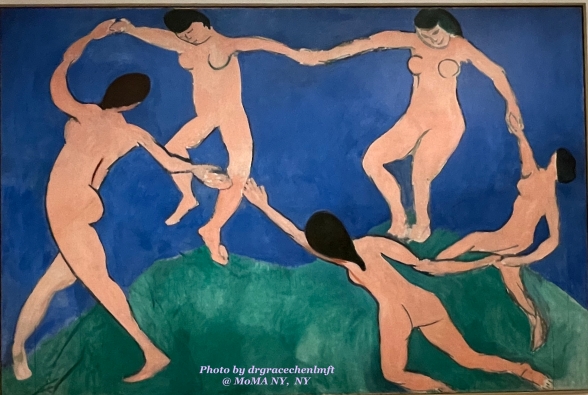
For some unknown reason to myself, the origins of the Polyvagal Theory, the vagus nerve, and the three pathways in our autonomic nevous system, and its conenction to evolution were all so fascinating to me. I started to feel a lot of my clinical experiences making sense in a very different way. I am fascinated to see how our autonomic nervous system (ANS) has evolved to help us react to threats while also facilitating social connections that enable us to thrive. This evolution enables mammals like us to derive significant benefits from social interactions, which in turn help our bodies function optimally, both physically and mentally. When we feel safe, our ventral vagus nerve takes the lead. But when we sense danger, that system gets inhibited, and we shift into what’s known as a sympathetic state, gearing up for action. If that doesn’t lead to a positive outcome, our body reacts even further, slipping into a primitive state governed by the dorsal vagal pathway, which can cause us to shut down.
Because of our ANS shifts in response to the detection of threats, Dr. Porges introduced the concept of “neuroception,” which refers to this intrinsic neural process that constantly evaluates risk and safety in our surroundings and within ourselves, without our even realizing it. Just think of it as our nervous system having its built-in security system that’s always on the lookout for signs of safety or danger.
Here are the crucial points of neuroception:
– It’s Not About Conscious Thinking: Unlike “perception,” which involves how we consciously make sense of the world around us, neuroception works beneath our awareness. Our nervous system is constantly at work assessing risk without our conscious awareness.
– It Evaluates Risk Automatically: This system functions like a constant monitor, determining whether what we’re experiencing—inside or outside—is safe, dangerous, or life-threatening.
– It Takes cues from both the world and our internal state.
* External Cues: It picks up on subtle signals from other people—facial expressions, tone of voice (especially warmth and prosody), gestures, and movements. It can even sense the intentions behind these cues. When looking at familiar faces or hearing warm voices, it often translates into a sense of safety.
*Internal Cues: On top of that, our body is continuously sending feedback from our internal organs—like our heart and gut—which greatly influences how we perceive our surroundings and our interactions.
– It Triggers Automatic Body Responses: Depending on what it determines about risk, neuroception sends us into one of the three main Polyvagal states: the social engagement state (where we feel calm and connected), the sympathetic state (ready for action), or the dorsal vagal state (where we might feel immobilized or shut down).
– A Foundational Survival Process: Essentially, neuroception serves as a fundamental survival mechanism present in nearly all living beings, but mammals have a more refined capacity. This not only enables us to react instantly to cues of safety but also helps us dial back our defensive reactions and foster social engagement.
– The Basis for Feelings: While neuroception itself happens subconsciously, it triggers body states that send signals back to the brain. This is part of a “bottom-up” process linked to interoception. In other words, the feelings of safety or danger we experience come from these physiological responses initiated by neuroception.
To sum it up, neuroception is your body’s instinctive, automatic, and non-conscious evaluation of safety and risk. It prepares your body for whatever the situation demands, often before you even realize what’s happening.
The concept of “neuroception” also led me to a deeper understanding of trauma. Considering a child grew up in an environment that never felt safe, that meant their nervous system would be constantly loop between sympathetic arousal or dorsal vagal shut down!
Understanding neuroception has deepened my insight into couples therapy. Communication between partners isn’t just about the words exchanged; it’s heavily influenced by how those words are expressed. It’s striking to see that 95% of couples seeking therapy are grappling with communication issues. Many walk into sessions expecting me to be a referee. Sure, I can help them learn what to say and provide a structure for “I-statements,” but it’s the “how” that truly matters. If the tone of voice or nonverbal cues signal a threat, that will activate their autonomic nervous system (ANS) responses.
